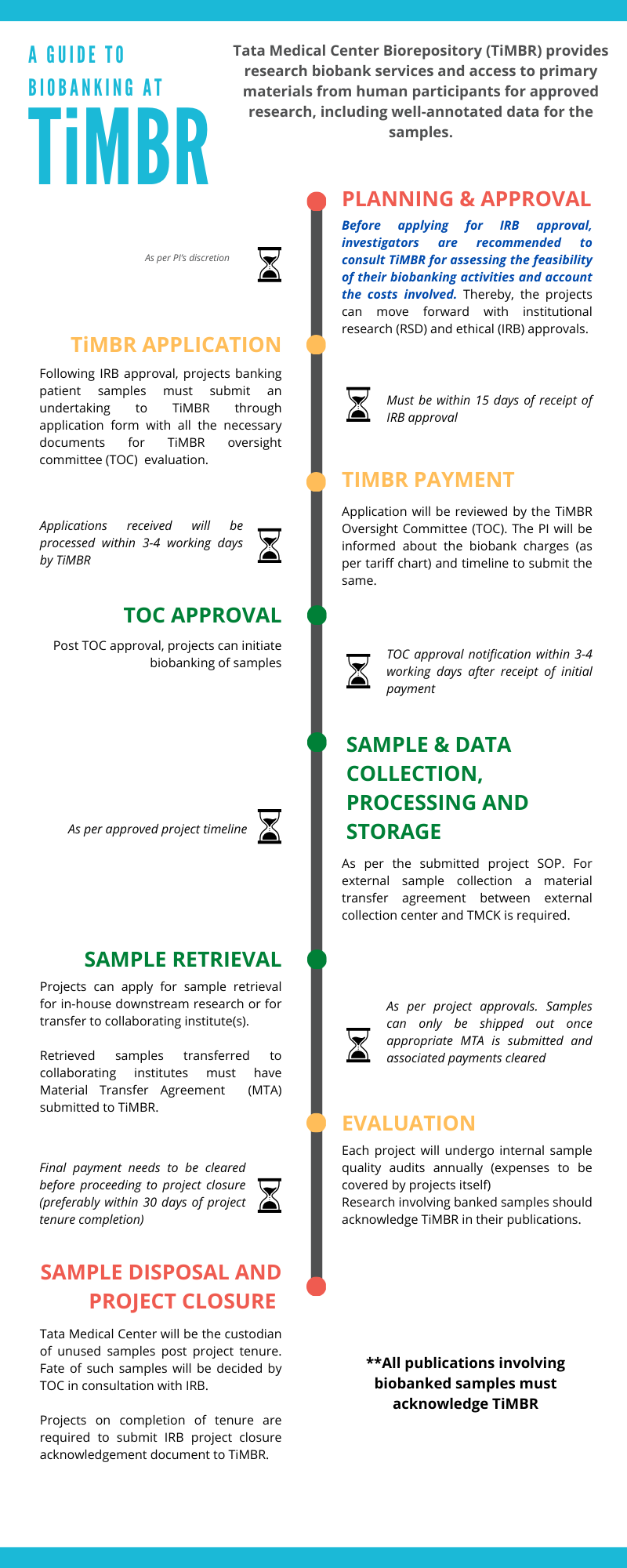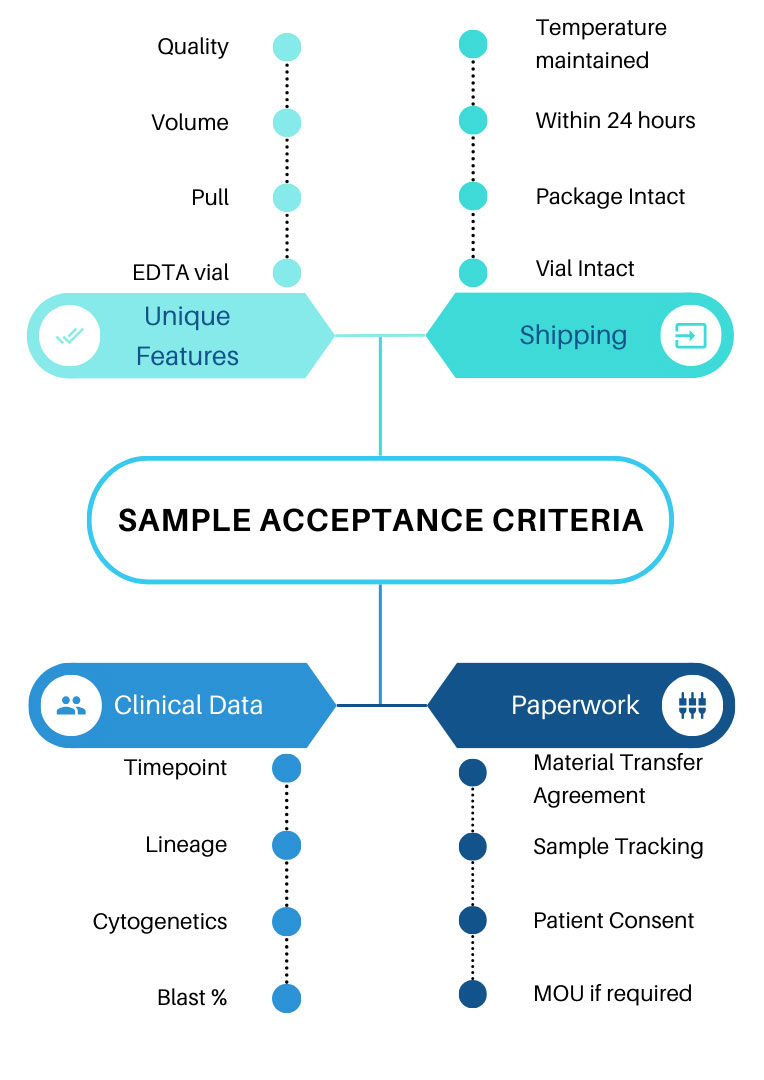
Cancer Genomics Laboratory
The ‘Cancer Genomics Laboratory’ (CGL) is a ‘one-stop’ genomics core facility for researchers at TTCRC and clinical investigators at Tata Medical Center. The overarching goal of CGL is to provide state-of-the-art infrastructure and technical expertise adept to deliver high-quality genomic data from a comprehensive range of cutting-edge genomic services like sequencing, SNP array and customised disease tracking assays (PReDiCT).
Our centralized facility houses high-throughput sequencing platforms like MiSeq, NextSeq 550 (Illumina), MinION and PromethION 2 Solo (Oxford Nanopore Technologies) and the conventional 8- capillary 3500 Genetic Analyzer (ABI). Besides, basic equipment required for quality check and quantification of nucleic acids are available like NanoDrop 2000 Spectrophotometer, Qubit 3.0 and Qubit 4.0 Fluorometer, 4200 TapeStation System – Automated Electrophoresis, Veriti and Proflex Thermal Cyclers, StepOnePlus Real-Time PCR System for 96-well (with VeriFlex block), QuantStudio 7 Flex Real-Time PCR System for both 96- and 384-well and ChemiDoc XRS+ system.

Therapeutic drug monitoring
Therapeutic drug monitoring (TDM) is crucial in pharmacometric research, particularly for optimizing therapy. At TTCRC, we conduct specialized pharmacological studies to identify the most therapeutically effective Asparaginases for treating acute lymphoblastic leukaemia.
Asparaginase Activity Assay
We measure enzyme activity in patient samples using a validated AHA-Indooxine assay, complying with international analytical assay standards/guidelines. This allows to identify if plasma drug concentrations are above the therapeutic threshold, aiding clinicians to take informed decision.
Asparaginase Antibody Assay
Utilizes a standardized ELISA method to identify anti-Asparaginase and anti-PEG IgG antibodies, signalling potential enzyme inactivation or hypersensitivity responses.
The lab is currently involved in optimising clinical proteomic assays to estimate blood plasma metabolite concentrations using Mass Spectrometry and developing population pharmacokinetic models for dose optimization and individualization.

Flow Cytometry Facility
The Flow Cytometry Facility at TTCRC facility is equipped with advanced instruments, including the BD FACSARIA Fusion™ (SORP), a flow cytometer sorter with 5 lasers (UV, violet, blue, yellow-green, red) and 18 detection channels, enabling sorting of up to 4 populations simultaneously in tubes or plates, and operates at Biosafety Level 2 (BSL-2). Additionally, the BD Accuri™ C6 Plus, a benchtop flow cytometer analyzer with 2 lasers and 4 detection channels (FL1, FL2, FL3, FL4).
For magnetic cell sorting, the facility uses the Miltenyi Biotec MACS sorter.The Thermo Scientific ARCTIC Refrigerated/Heated Bath Circulator maintains cell viability by regulating temperatures between 5°C and 40°C.
The facility offers cell phenotyping and sorting services to both TTCRC and external researchers. External users are welcome to access the facility on Mondays and Fridays. For scheduling and further inquiries about services with the BD FACSARIA Fusion™ system, external users can contact Mrs. Bhaswati Tarafdar at bhaswati.tarafdar@ttcrc.tmckolkata.org
This facility is an invaluable resource for researchers requiring advanced flow cytometry techniques for their cellular analysis and sorting needs.
*Costing for different type for FACS ARIA Fusion™ experiment with GST
| Type of Flow Cytometric Experiment | Costing after including GST (CGST 09% and SGST 09%) |
|---|---|
| Flow cytometric acquisition without FlowJo analysis | Rs. 3000.00 |
| Flow cytometric acquisition with FlowJo analysis | Rs. 3250.00 |
| Flow cytometric Sorting experiment without FlowJo analysis | Rs. 4700.00 |
| Flow cytometric Sorting experiment with FlowJo analysis | Rs. 5000.00 |

The Tata Medical Center Biorepository
The Tata Medical Center Biorepository is equipped to store 150000 of 1.8-2 ml capacity vials at ultra low temperatures. This includes storage of 12000+ cryo vials at -196 degrees (Liquid Nitrogen). The facility also houses two Class II biosafety cabinets, inverted flouresence microscope and refrigerated cetrifugation units. We adhere to stringent quality standards and undergo periodic audits to maintain the integrity of the samples for long periods. For robust data management, TiMBR uses advanced Laboratory Information Management System, a customised solution provided by LabVantage to track sample journey within the Biorepository. In the year 2023-2024, biobanking services are provided to 6 research projects & 7 clinical trials across 8 departments in Tata medical Center, Kolkata with an annual number of 305+ patients consenting to biobanking.



Mass Spectrometer
Mass Spectrometer
Currently our facility is equipped with TripleTOF 6600 mass spectrometer (AB Sciex), connected to a nano LC system (Eksigent) coupled with a nano electrospray ion source for bottom-up MS-based proteomics.
Key Features:
- 1. Time-of-flight (TOF) Mass Analyzer
- 2. Data Acquisition: DDA (Data Dependent Acquisition) and DIA (Data Independent Acquisition), upto 200 variable SWATH windows per cycle.
- 3. Scan speed: 100 Hz MS/MS scans per sec in DDA Acquisition; upto 200 MS/MS scans per sec in SWATH Acquisition
- 4. Mass resolution-30,000 high-resolution TOF MS/MS mode
- 5. Nano LC for acquisition of clinical and low input samples ranging from 500ng -1ug of sample load.
Softwares
- 1. Analyst version 1.7.1 for MS data acquisition
- 2. Peak View version 2.2 for analysis and assessing data files
Capabilities
- 1. Clinical Proteomics
- 2. Drug metabolism studies
- 3. Plasma biomarker studies

Laser Capture Microdissection
Laser Capture Microdissection (LCM)
We are equipped with Leica LMD7 Microscope in our facility.
Specifications:
- Laser Microdissection (LMD): High precision, contamination-free laser microdissection and sample collection
- Microscope Type: Fully automated upright research microscope
- Laser Options: 355 nm UV laser for precise cutting
- Illumination: LED illumination for brightfield, phase contrast, and fluorescence
- Objective Lenses: Broad range of objectives from 2.5X till 150X, including high NA objectives for detailed imaging
- Camera Options: High-resolution digital cameras for imaging and documentation
- Software Compatibility: Leica Application Suite (LAS) for advanced imaging and analysis
- Future possibilities of AI integrated interface applications


